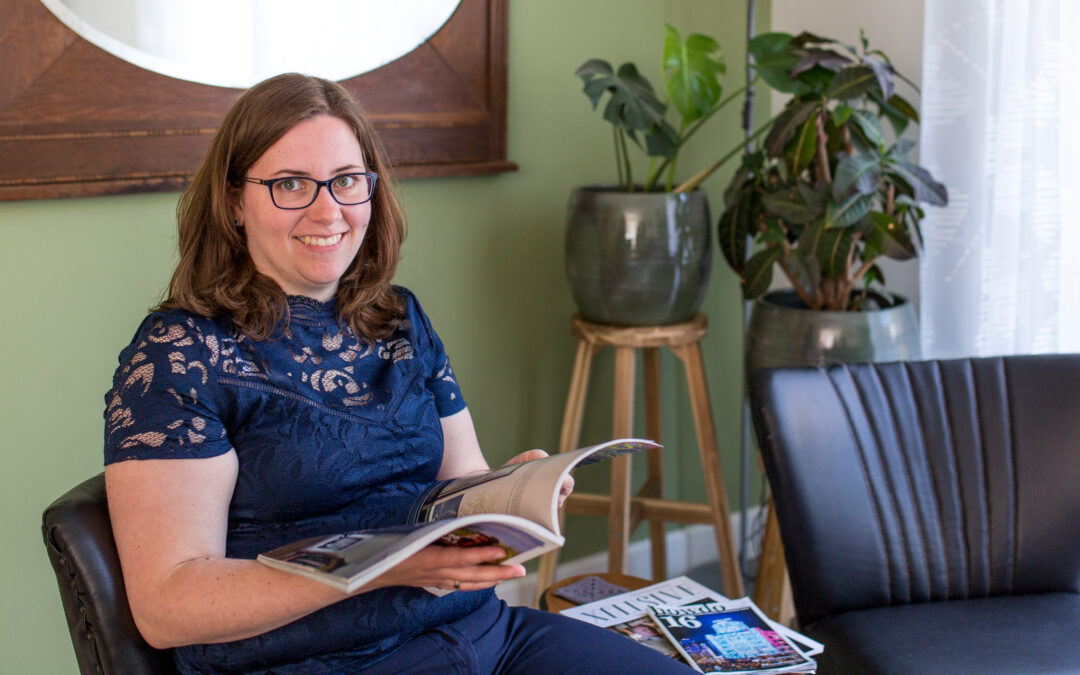“Outsource painting is so expensive, and all the Dutch do it themselves. It looks so easy, however, I don’t know where to start. And, I just want to have it done”. That’s what my client M. said. What is difficult for you? I asked. She replied: “I just get lost in all the possibilities and materials. Of course, I visited the construction store. There are just so many choices to make. Materials, colours, tools and fillers, I am just overwhelmed.”
“Let’s do it together”. First, we started by overlooking the situation and what needed to be painted. Then, we decided on colours and ordered the materials at a webshop.
The order came, and we started with a 2.5 hours training in their house. After that, all the gaps were filled and the first walls were painted with a good end result.
Also, thinking of painting your house? Not knowing where to start? Then it’s time to check this out.
What does it cost to paint the interior of your house?
There is not an easy answer to this question. As, some people like to do it themselves, and others prefer outsourcing.
Costs of painting a wall
When a professional painter paints a wall, he or she will count €8-€16 per square meter. This depends on size of the space, state of the surface and colours.
If you paint the walls yourself, it will be somewhere between €1,50-€4 a square meter. So, it’s easily a few hundred euros of paint for a living room.
Painting the interior of your house involves more than just the costs of paint. You can also think about rollers, brushes, materials to cover the floor, tape and sanding paper.
A basic white is normally cheaper than a colour mixed for you.
Wooden surfaces
It won’t surprise you that painting wooden surfaces in your house, will cost you more than painting walls. The type of paint (water-based) is different. And, a window frame is more work than just a smooth door.
To paint a simple door and -frame yourself, you easily will spend €20-35 on materials. When you outsource it, it will be €120-180.
Are you interested also in maintaining the outside of your house? Check out this blog.
How to start painting?
The first time I painted walls was when I was 15. It was time to change my room and my parents told me: you can change it, but you need to do it yourself.
I went to the local paint shop, compared prices, decided on the colour and even thought about buying tape and something to cover the floor.
Then, I started. I figured out that you can paint on wallpaper, so I did. The wallpaper started to get lumpy, and the paint soaked in very much. I was afraid when I added a second layer, the wallpaper would come off. In the next years, I saw still some blue shining through the terracotta colour.
This example is not what you want. However, we can learn a lot from our mistakes. So here they come:
Mistakes beginners make when painting their interior.
1. Forget to prepare the surface.
In the example, not preparing the surface gave an end result where I wasn’t proud at. Good preparation is half of the result. The steps for good preparation for painting the interior of your house is:
A. Degreasing and cleaning the surface with a special paint cleaner.
B. Sand wooden, metal and plastic surfaces until the surface is completely matt. This helps the adhesion of the paint. Sandpaper is available in different grits. If you need to sand rough surfaces, you start with P80, then P140(medium) and P180(fine). With other surfaces, P180 is enough.
C. Remove dust.
D. Tape what you don’t need to paint
E. If the surface is not painted before or has bare surfaces, you should apply a primer first. A primer fills little holes and helps to colour the material.
F. Repair the surface
G. Sand again, if necessary.
2. Buying cheap rollers, brushes and tape.
I love quality tools. As they perform better, don’t lose hair, and spread paint more evenly. For tape, good tape, you can still remove it after a few days. Cheap tape doesn’t stick at all or too well. Removing tape in 100 pieces is not really my thing.
3. Buying cheap paint.
The most expensive ingredients for paint are pigments and binders. That are also the ingredients which make the difference in the durability, and how many layers you need for an opaque paint layer.
4. Paint too fast
Spreading the paint is the key to getting a good result.
5. Want to do it perfect
If you are a perfectionist, this is your pitfall. While spreading the paint, you see a little dust particle in the paint, you go back, and paint it again. A few minutes later, you look, and you see stripes in the paint. What happened? The paint already flowed, and with going back, the paint didn’t flow so well because it had dried already a bit.
6. Remove the tape after a few days
The best time to remove the tape? When the paint is still wet.
7. Dirty hands
Mostly, people get dirty hands because they overload their brushes and rollers with paint. The solution is easy, unload your brush and roller when there is too much paint. And, keep old fabric ready to clean your hands.
8. Painting at 30 degrees Celsius
Many people think: we have time off, let’s start a project. Nothing wrong with this, of course. However, the optimal temperature to paint inside is 12 degrees Celsius. This helps to let the paint flow before it dries.
Some ways to get started
A. Trial and error. Start with painting your house on a place where you don’t come so often. For example, the attic or storage. And, go with the flow.
B. Watching video’s on Youtube. There are some good video’s where you can learn some tips and tricks.
C. Asking others to help you.
D. Follow a workshop-paint-your-own-interior
If you are interested in learning to paint professionally at your own house, just send a message. With a 2,5-3 hour workshop, you know exactly the right techniques to use and the right pace. You will save time and energy in the end. Just send a message, by clicking here for all the possibilities.
E. Read this article about painting a stair.




Trackbacks/Pingbacks